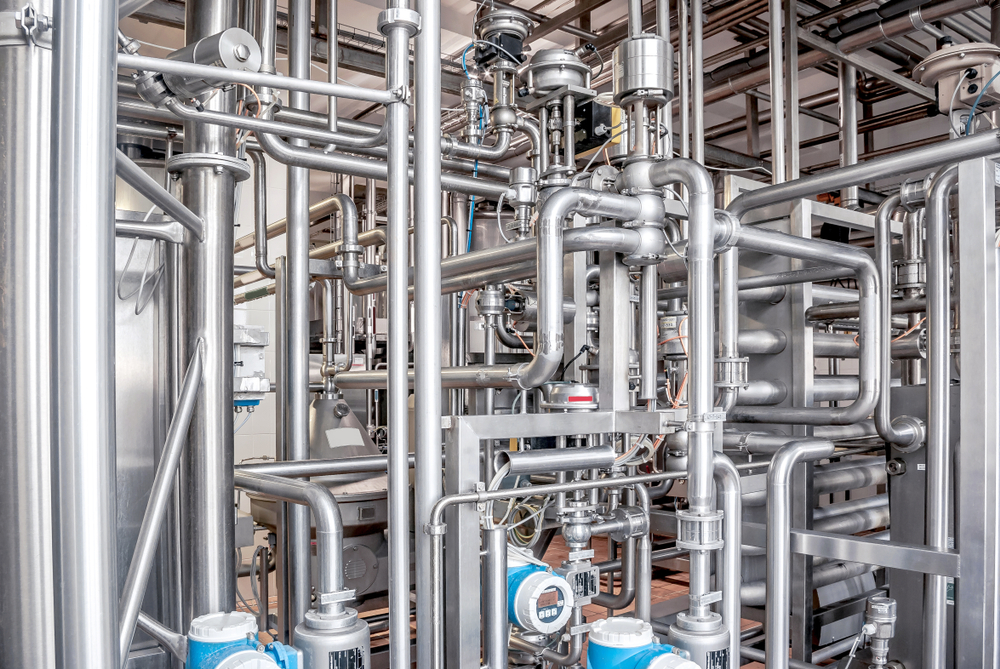
Heat plays a unique role in the production life cycle of a metal. It is a common factor when forming the weld or when altering the properties of the metal, such as— thermal expansion, hardness, metallurgical structure, electrical resistance, etc. However, the successful application of heat in metal comes from precision control. When excessive, heat may expand, burn through, or distort the weld, while quick cooling may also lead to warps and breakages.
This nature of heat is critical to understand when welding stainless steel tubes. With less thickness and material to dissipate the heat, the weld parameters must be applied with control. In this article, we will explore how heat influences the expansion and contraction of stainless steel and look at how potential issues can be managed.
Heat Expansion and Contraction When Welding
Thermal expansion and contraction are the essential nature of the metal when heat is applied to it. When the electric arc applies heat to the weld metal, it expands uniformly in all directions. However, as the weld pool is allowed to cool, it contracts and hardens.
When the temperature of the arc increases in the weld pool, it affects the heat flow pattern leading to non-uniform heat distribution in the metal. This non-uniformity causes the metal to expand in an uncontrolled direction causing the metal to warp and distort. Similar is the case when the weld pool is allowed to cool too quickly. Rapid cooling may occur when the metal isn’t preheated, or the weld is performed at low temperatures. As the weld pool cools down rapidly, it alters the microstructure of the metal, causing a loss of ductility and toughness. Furthermore, it also causes non-uniform shrinkage leading to distortion and cracking at the weld root.
This expansion and contraction theory is essential when welding thin stainless steel tubes.
The Relationship Between Heat and Stainless Steel
Many industries prefer stainless steel tubing for its excellent strength, durability, heat resistance, and, most importantly, corrosion-resistant properties. Stainless steel tube welding isn’t necessarily different from conventional metallic welding, but it requires careful consideration for its tricky relationship with heat.
Thin tubes usually have a thickness that is less than 2.5 mm. This also means that it has less metallic mass to dissipate the heat. This causes the heat to build up in a localized area resulting in warping, distortion, or burn-through. The low thermal conductivity of stainless steel makes this issue even more pronounced.
When welding a stainless steel tube, the welders have to occasionally stop, reposition themselves, and restart the weld, which causes irregularity in heating and cooling. Events like this are the leading cause of defects when stainless steel tube welding. In addition, heat expansion and contraction factors of the metal create a non-uniform concentration of internal stress to induce premature failure of the metal.
Managing Stainless Steel Welding Heat Expansion and Contraction
The issues of heating and cooling, heat expansion and contraction, warpage and distortion, and sensitization of stainless steel can be managed during tube welding. Here is how it can be done:
- Keep the metal thickness in mind. Thin tubes warp easily due to a lack of mass to disperse the heat.
- Preheat the tube before welding. This will prevent the rapid cooling of stainless steel.
- For better results, weld the tube in four quarters. Weld the two opposite sides first and repeat that with the other two quarters. This allows welders to better control the heat and facilitate repositioning without causing any damage or discrepancy.
- Perform welding with GTAW. The technique is suitable for producing clean welds, which is often the requirement of stainless steel tubes. It effectively provides weld parameter control which is important for minimizing the defects due to stainless steel tube welding heat expansion and contraction.
Getting the Best Result When Stainless Steel Tube Welding
Since heat is always the central issue when welding thin tubes and stainless steel, heat control with GTAW can be a major advantage; controlled heat input means minimized risk of burn-through, distortions, and warpage due to heat expansion and contraction. When accompanied by orbital technology, GTAW can facilitate controlled movement of the weld head around the tube circumference, so you don’t have to weld in quarters. This is good for maintaining weld consistency and preventing chances of heat localization.
By maintaining heat control, adhering to specifications, and understanding the heat expansion and contraction mechanisms, it is possible to weld stainless steel tubes to standard.
Arc Machines, Inc has served the welding industry for decades with its wide range of robust orbital welding solutions. AMI offers a wide range of weld heads suitable for stainless steel tube welding. For product inquiries, contact sales@arcmachines.com. For service inquiries, contact service@arcmachines.com. To develop a custom solution that addresses stainless steel tube welding heat expansion and contraction, contact us and arrange a meeting.




